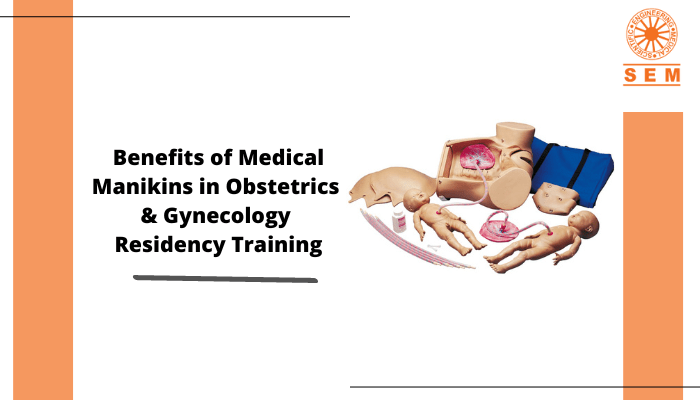Benefits of Medical Manikins in Obstetrics & Gynecology Residency Training

Around 46% of all maternal deaths and 40% of neonatal deaths happen during labor or within the first 24 hours after birth.
Manikins and simulators help build relevant obstetric and gynecological skills that prepare and equip them with the skills to handle obstetric emergencies, and endoscopic and laparoscopic surgeries like hysterectomy, salpingectomy, oophorectomy, and access to the abdomen. Simulation gives them a platform to engage in hands-on practice for standard delivery, postpartum hemorrhages, massive blood transfusion, fetal malpresentation, vaginal hysterectomies, amniotic fluid emboli, etonogestrel implant insertions, shoulder dystocias, among others, improving the quality of care available to people.
The benefits of incorporating medical manikins in obstetrics and gynecology residency training are paramount and extensive, making it an indispensable tool in the field.
Benefits of Medical Manikins in Obstetrics and Gynecology Residency Training
1. Experience
Only 3.6% of obstetrics and gynecology residents feel confident in their ability to perform robotic surgery without further training. This lack of confidence may be attributed to a lack of opportunities to gain that experience. For example, all emergency and life-threatening cases are assigned to experts, leaving others to watch or assist, depriving them of the potential hands-on experience. Medical manikins and simulators solve that problem as they provide the opportunity for hands-on experience in a safe, controlled environment and for a wide range of scenarios.
2. Accessibility
Given the sensitivity of obstetrics and gynecology, simulation can be an effective tool in letting students practice difficult skills and procedures. Medical manikins and simulators are also able to create situations where students can practice procedures that are hard to reproduce otherwise, need repeated practice, or contain high-fidelity scenarios. And all this is made possible without posing any risk, inconvenience, or discomfort to real patients.
3. Transitional
Manikins and simulators bridge the gap between theory and practical as they prepare learners for the real thing. Although these aren’t real patients or real situations, that doesn’t make it ineffective. When a learner enters such a carefully planned simulation scenario with manikins, simulators, actors, and stories, it gets real very, very fast. The manikins also look and respond like real patients. Using manikins for training these obstetric and gynecological skills is therefore pivotal in making sure students don’t enter the working field feeling unprepared or unequipped to deal with the exigencies of the real hospital setting.
4. Skill-building
Through repeated hands-on practice, manikins and simulators are able to build diverse skills in learners- skills that cannot all be cultivated as well through theoretical teaching paradigms alone. In addition to specific clinical skills, it is effective at building interprofessional communication skills, teamwork skills, decision-making skills, and emotional skills that allow them to effectively communicate with patients or distressed family members. In fact, simulation can elevate the skill levels of first and second-year residents to that of third and fourth-year residents. Additionally, it can also be used to teach new skills to experienced professionals.
5. Knowledge Acquisition and Retention
Repeated practice is also great at cementing the fundamentals into the learners’ minds. Not only do they understand concepts better and in more detail, but they also retain the learned information for longer, studies show.
6. Encourages Improvement
Through simulation and its ability to provide real-time feedback, medical manikins are able to identify which skills need more work for each individual learner, leaving no stone unturned. Additionally, the simulation may also identify facility organizational and equipment issues.
7. Better Maternal-Fetal Outcomes
Since manikins and simulators are able to allow learners the ability to practice without the consequences of making mistakes, it gives them the freedom to explore. Through this, it is able to teach in a way that is unsurpassed. This translates to knowledgeable students that graduate into professionals who know what they are doing. And ultimately, this improves maternal-fetal outcomes as it helps these professionals take crucial decisions at the right time.
Through simulation, real-time feedback, assessment, and debriefing, medical manikins, and simulators can achieve new heights for obstetrics and gynecology training and form an integral part of the training of medical residents.
